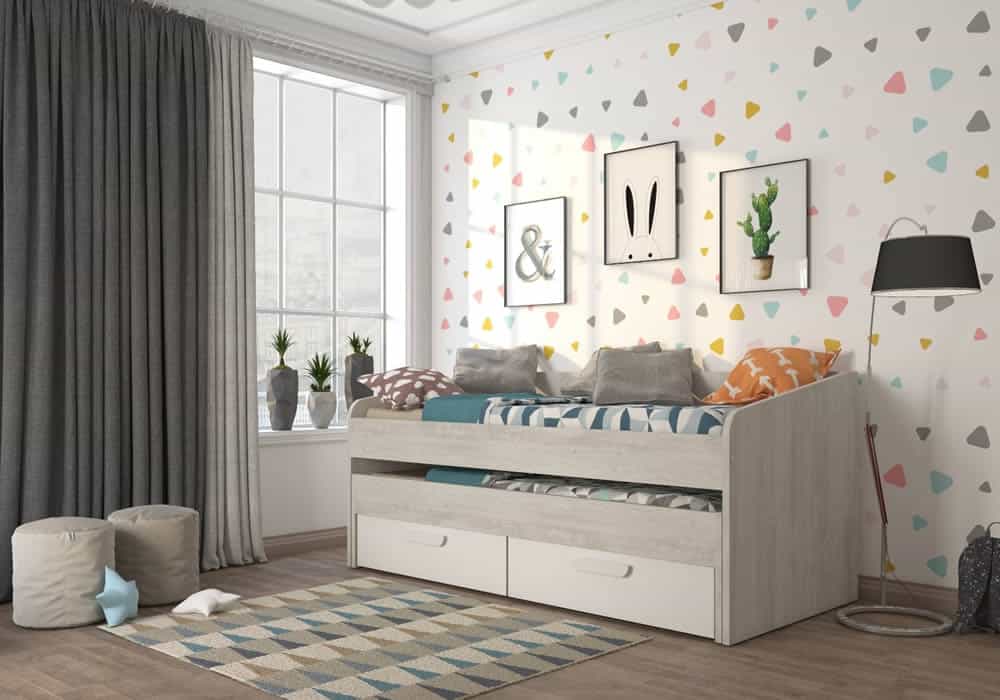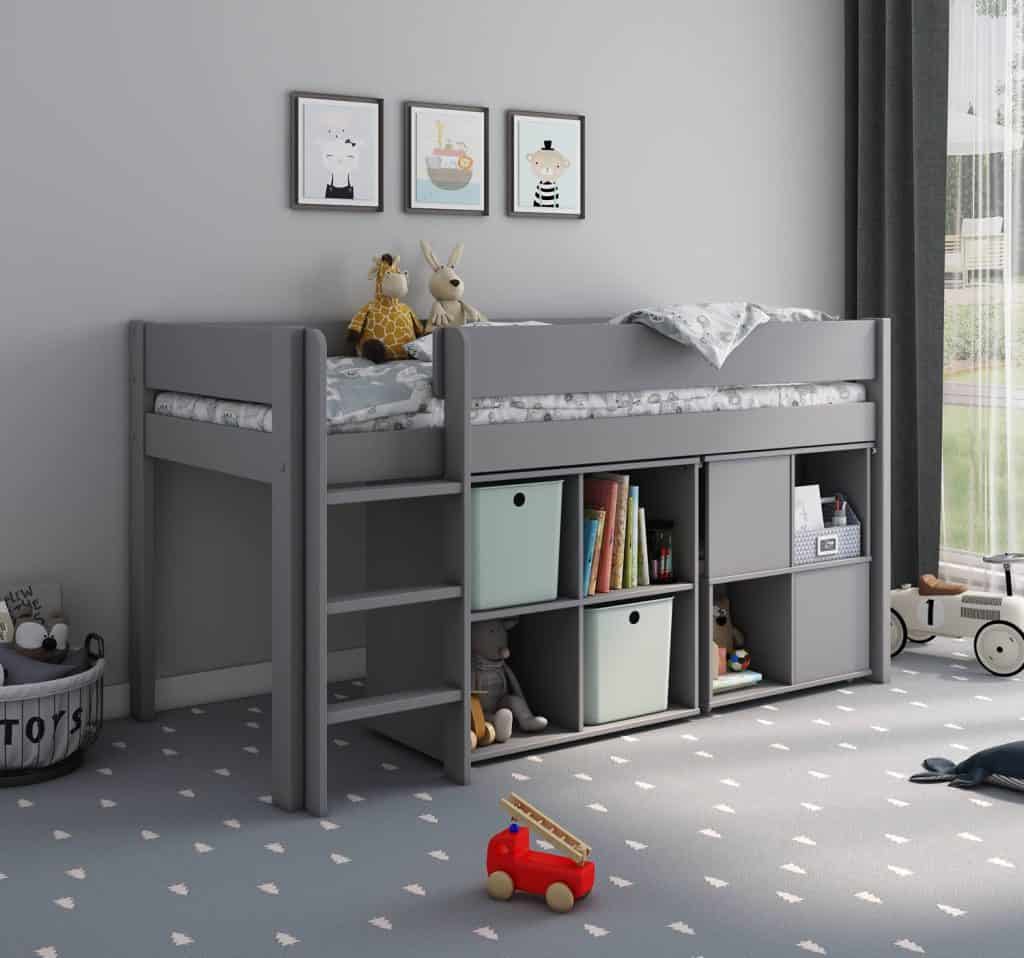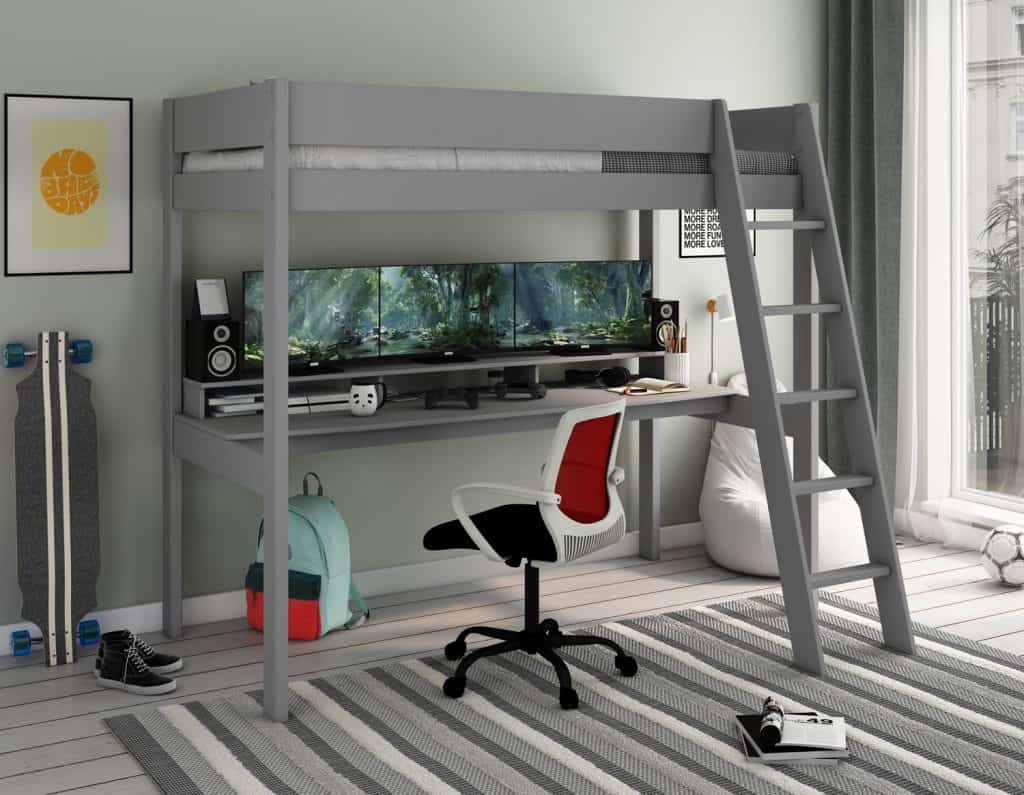When it comes to choosing the right bed for your child’s bedroom, you’re faced with a variety of options, each designed to maximize space and functionality. Cabin beds, mid sleepers, and high sleepers are popular choices for UK parents, but what sets them apart? In this comprehensive guide, we’ll explore the key differences between these three types of beds to help you make an informed decision that suits your child’s needs and the available space in their room.
Table of Contents
Introduction
The Role of Space-Saving Beds
In today’s homes, where space is often at a premium, optimizing room layouts and storage solutions is crucial. Space-saving beds like cabin beds, mid sleepers, and high sleepers have become increasingly popular for children’s bedrooms. These beds offer innovative designs that allow you to maximize space and create functional, organized environments.
Overview of Cabin Beds, Mid Sleepers, and High Sleepers
Before delving into the differences between these three types of beds, let’s clarify what each term means:
- Cabin Bed: A cabin bed, also known as a captain’s bed, is a versatile and space-saving bed with various storage options and often includes built-in furniture, like drawers or shelves.
- Mid Sleeper: A mid sleeper is a raised bed with open space beneath, which can be used for storage, study, or play. It’s positioned higher than a cabin bed but lower than a high sleeper.
- High Sleeper: A high sleeper is a loft-style bed that elevates the sleeping platform significantly, creating a substantial open space underneath, typically used for additional furniture or activities.
In the following sections, we’ll explore these types of beds in greater detail, outlining their advantages and features.
Cabin Beds: Space-Saving Marvels

What is a Cabin Bed?
A cabin bed is designed to be a space-saving marvel, combining a comfortable sleeping space with built-in storage solutions. These beds often feature drawers, shelves, and cabinets that provide ample space for organizing your child’s belongings. Cabin beds are known for their versatility and can cater to various storage needs.
Advantages of Cabin Beds
- Efficient Use of Space: Cabin beds maximize room space, making them an excellent choice for smaller bedrooms.
- Storage Solutions: They offer integrated storage options, helping keep the room organized.
- Versatility: Cabin beds can come in a variety of designs and configurations, allowing for personalization.
Features and Variations
Cabin beds may include the following features:
- Underbed Drawers: Built-in drawers beneath the bed for clothes, toys, or bedding.
- Shelving Units: Open shelves for books, toys, or decorative items.
- Pull-Out Desks: A pull-out desk that can be used for study or as a creative workspace.
- Play Tents or Curtains: Some cabin beds come with fun play tents or curtains for added excitement.
Mid Sleepers: The Perfect Balance

Defining Mid Sleepers
Mid sleeper beds are designed to strike a balance between space-saving and comfort. They provide an elevated sleeping platform with open space beneath, offering room for storage or other activities. Mid sleepers are positioned higher than cabin beds but lower than high sleepers.
Advantages of Mid Sleepers
- Optimal Space Utilization: Mid sleepers make efficient use of room space while leaving a substantial area underneath for customization.
- Storage Options: They often include storage solutions, such as drawers or shelves, to keep the room tidy.
- Room for Play or Study: The open space beneath the bed can be transformed into a play area or a study nook.
Popular Designs and Features
Mid sleeper beds come in various designs, offering flexibility in terms of customization:
- Ladder Access: Many mid sleepers come with a ladder for easy access to the sleeping platform.
- Slide Attachment: Some models include an optional slide for a playful entrance and exit.
- Storage Stairs: Stairs with built-in storage drawers provide additional organization.
High Sleepers: Elevating Comfort

Understanding High Sleepers
High sleeper beds elevate the sleeping platform to a significant height, creating a substantial open space underneath. This open area can be used for a range of activities, such as setting up a study zone, a cozy reading corner, or even placing a sofa or additional storage furniture.
Advantages of High Sleepers
- Maximizing Vertical Space: High sleepers make efficient use of vertical space, allowing for various configurations beneath the bed.
- Versatility: The open space beneath high sleeper beds can be customized to suit your child’s changing needs.
- Additional Features: Many high sleeper beds offer customizable add-ons, such as desks, sofas, or additional storage units.
Customization and Additional Features
High sleeper beds often provide options for customization:
- Desk Space: Many high sleepers come with a built-in desk, perfect for studying or creative activities.
- Sofa or Seating: Some models allow for the addition of a sofa or seating area beneath the bed.
- Storage Solutions: High sleepers can include storage options like shelves, drawers, or cabinets for organization.
Choosing the Right Bed for Your Child
Selecting the right type of bed for your child’s bedroom involves considering various factors:
Assessing Space and Room Layout
Evaluate the available space in the room and the layout. In smaller bedrooms, cabin beds or mid sleepers can be effective in optimizing space, while high sleepers are suitable for rooms with ample vertical space.
Considering Age and Safety
Assess your child’s age and their ability to safely use a high sleeper or mid sleeper. Some experts recommend a minimum age for top bunk or high sleeper use.
Exploring Storage and Additional Features
Consider your child’s storage needs and preferences. If your child has many belongings, a cabin bed with integrated storage might be the best choice. For a child who loves studying or playing, a mid sleeper or high sleeper with a desk or play area can be a valuable addition.
Room Aesthetics and Personal Preferences
Think about the aesthetics of the room and your child’s personal preferences. Each type of bed offers various design options, allowing you to choose a style that complements the room’s decor and your child’s taste.
Conclusion
In the world of children’s bedroom furniture, cabin beds, mid sleepers, and high sleepers stand out as space-saving solutions that cater to various needs and room sizes. Choosing the right bed for your child involves evaluating space, safety, storage, and personal preferences. By understanding the differences between these types of beds, you can make an informed decision that creates a functional and enjoyable space for your child to sleep, play, and grow. The perfect bed is the one that brings comfort, excitement, and functionality to your child’s room.

